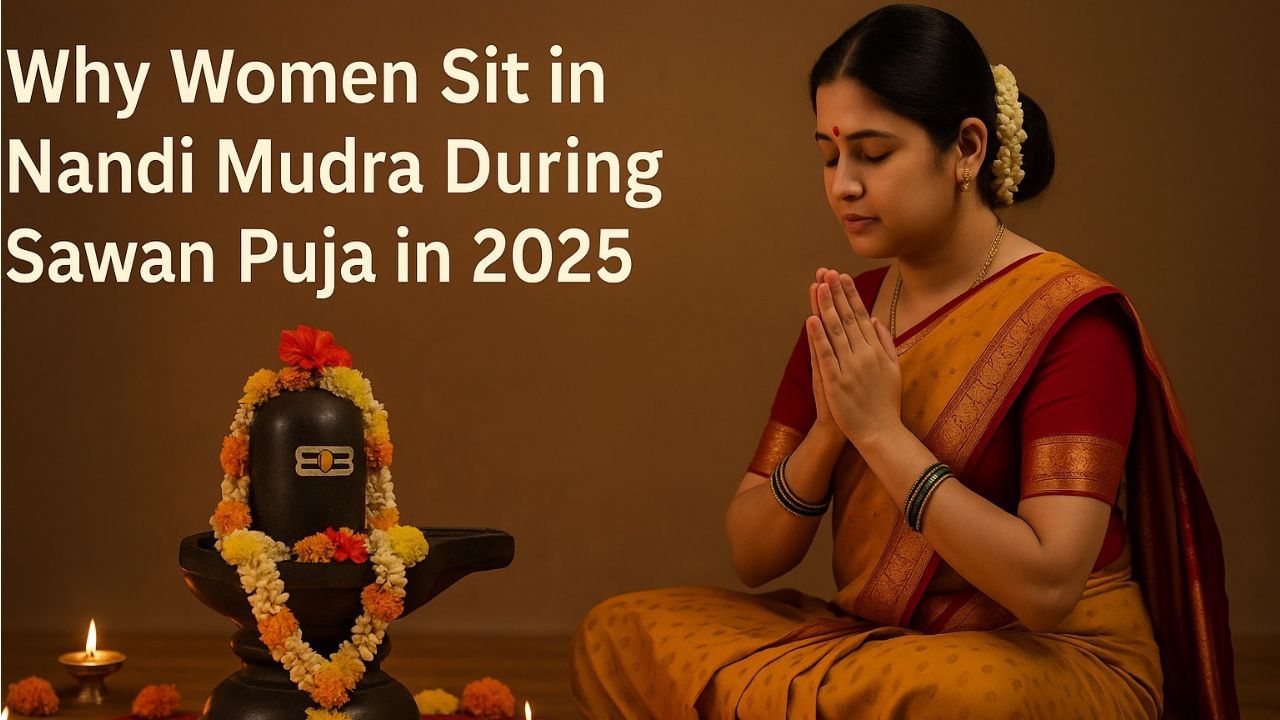Mumbai: In Indian spiritual tradition, every ritual and posture in puja (worship) holds profound symbolic and scientific meaning. As the sacred month of Sawan 2025 approaches, one such gesture gaining attention is the Nandi Mudra — a unique sitting posture often adopted by women during Shiva worship. But what does it really signify?
Rooted in ancient customs and scriptures, Nandi Mudra involves sitting in a position that resembles a bull — knees bent, hands folded, and head bowed. It symbolises complete surrender and is considered a gesture of devotion modelled after Nandi, the divine bull and loyal vahana (vehicle) of Lord Shiva. For many women, this posture is more than symbolic — it’s believed to carry blessings for marital harmony, fertility, and family wellbeing.
What is Nandi Mudra?
Nandi Mudra refers to a devotional sitting posture where the worshipper sits in front of the Shivling with folded knees, joined hands, and bowed head — just like a bull resting peacefully. It mirrors the image of Nandi, Lord Shiva’s mount and most devoted follower. This act is not merely physical but deeply symbolic of surrender, reverence, and spiritual connection.
Nandi’s spiritual role in Shiva worship
According to Hindu mythology and Puranic texts, Nandi is not just Shiva’s vehicle but also his gatekeeper and messenger. A long-standing belief holds that if a devotee whispers their wish into Nandi’s ear, the message reaches Shiva swiftly. Nandi acts as the spiritual medium, conveying heartfelt desires to the Lord.
Why do women perform puja in Nandi Mudra?
Women particularly adopt this mudra during Sawan, especially on Mondays (Somvar), as a gesture of devotion and humility. It is believed that through Nandi, their prayers — especially for fertility, a peaceful marriage, and the wellbeing of their spouse — are directly transmitted to Lord Shiva.
Symbol of bhakti and surrender
Taking the Nandi posture reflects the devotee’s submission and complete faith in the divine. Much like Nandi’s silent and eternal watch over Shiva, this mudra symbolises service, humility, and unwavering devotion — qualities that lie at the heart of every spiritual pursuit.
For husband’s longevity and marital harmony
During the month of Sawan, women often observe fasts and offer prayers in Nandi Mudra to seek blessings for their husband’s long life and family harmony. The posture becomes a medium of expressing their inner devotion and emotional appeal to the divine.
Fulfilment of desires
There is a strong belief that prayers whispered through Nandi — or made in his presence — have the power to manifest. Women especially turn to this mudra to pray for children, happiness in marriage, and to fulfil deep personal wishes. The act of praying in Nandi Mudra is seen as a sacred ritual of intention-setting.
What the scriptures say
The Shiv Purana and other sacred texts highlight Nandi as Shiva’s most loyal devotee. Forever positioned before the Lord, Nandi is often called Shivdwarpal — the gatekeeper to the divine. Devotees who sit before Nandi and meditate upon Shiva are said to have their desires fulfilled more readily.
As we enter Sawan 2025, the ancient practice of Nandi Mudra continues to hold timeless significance — reminding us that faith, humility, and heartfelt prayer transcend generations and still connect us deeply to the divine.
(Disclaimer: The information provided is based on traditional beliefs and religious texts. News9 Live does not endorse or validate these claims.)
